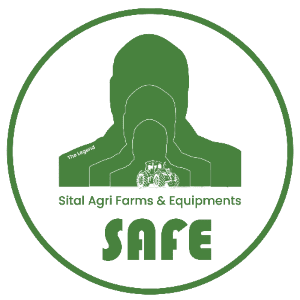The Ultimate Guide to Agriculture Equipment: Boosting Efficiency in Farming
In the heartland of agriculture, where fields stretch to the horizon and the promise of sustenance and growth blooms with every season, there lies a crucial force that has forever transformed the way we farm—the remarkable world of agriculture equipment. These mechanical marvels are not just tools; they are the relentless allies of farmers, the champions of efficiency, and the catalysts of global food production.
From the sturdiest tractors plowing the earth to the most advanced harvesters reaping golden fields, agriculture equipment stands as the backbone of modern farming. The story of farming’s evolution is intrinsically tied to these machines, each designed with a singular purpose—to make the toil of cultivation more manageable, more productive, and, ultimately, more sustainable.
In this comprehensive exploration, we delve into the diverse universe of agriculture equipment, uncovering the many categories and types that define modern farming. From the indispensable tractors that till the earth to the precision of planting and seeding equipment, from the mammoth combines that bring in the harvest to the irrigation systems nurturing thirsty crops, we’ll navigate through the machinery that feeds the world.
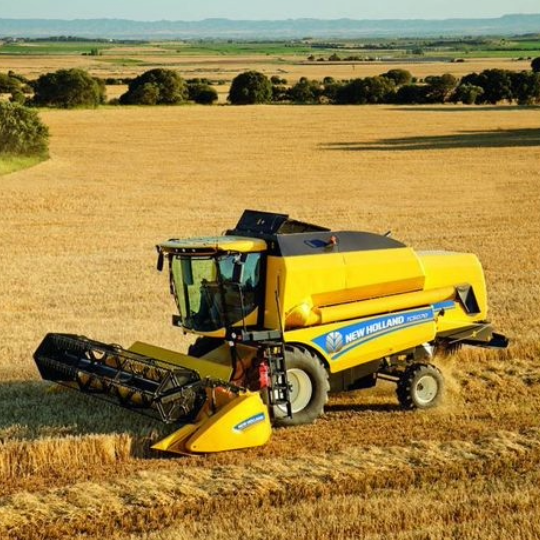
But agriculture equipment isn’t just about brawn; it’s about brains too. The integration of technology has paved the way for precision agriculture, data-driven insights, and even autonomous farming. In an age where efficiency and sustainability are paramount, these innovations herald a new era in farming.
In our journey, we’ll also explore the vital role of sustainable farming practices, where equipment and ethical cultivation converge. It’s a tale of eco-friendly machinery, soil conservation, and resource-efficient precision agriculture—a testament to the industry’s commitment to a greener future.
Agriculture equipment is not merely a tool; it’s a trusted partner. However, with great power comes great responsibility. Maintaining these machines and ensuring safety practices is paramount to both productivity and protection. We’ll delve into the world of maintenance and safety, where the care of these colossal companions is as essential as their operation.
The future of agriculture equipment promises even more profound transformations. The rise of smart farming and the integration of green technology herald a promising future for agriculture. It’s a future where efficiency, sustainability, and productivity converge to meet the world’s growing food demands.
The Evolution of Farming Machinery
Agriculture equipment’s journey is a testament to human innovation and the continuous quest for improving farming practices. Over the centuries, farming machinery has undergone a remarkable transformation, shaping the course of agriculture.
Ancient Beginnings
In the earliest days of agriculture, human ingenuity led to the creation of simple yet effective tools to till, sow, and harvest crops. This marked the beginning of agriculture equipment’s history.
The Hand Tools Era : During the ancient era, hand tools dominated farming practices. Farmers relied on basic implements such as hoes, plows, and sickles to cultivate and harvest their crops. These hand tools represented the first steps towards mechanization, making farming more efficient than manual labor alone.
The Agricultural Revolution
The agricultural revolution, a turning point in history, brought significant advancements to farming machinery. It was during this period that animal-powered machinery and early mechanization came into play.
The Advent of Animal-Powered Machinery : As human settlements grew, so did the need for more efficient farming methods. This led to the introduction of animal-powered machinery, such as plows pulled by oxen or horses. These innovations not only increased productivity but also reduced the physical burden on farmers.
Windmills and Water Wheels emerged as ingenious early inventions for tasks like grinding grain and pumping water. These early innovations harnessed natural forces to perform critical agricultural functions, revolutionizing grain processing and irrigation.
Industrialization and Steam Power
The industrial age ushered in a new era for agriculture equipment. Innovations in steam power and machinery marked a shift from reliance on animals and human labor to the use of mechanical power.
The First Tractors and Steam Engines :The development of the first tractors and steam engines during the industrial revolution was a significant leap forward. These machines mechanized various aspects of farming, from plowing fields to powering grain mills. The invention of the steam-powered traction engine in the 19th century laid the foundation for the modern agricultural tractor, which would go on to revolutionize farming practices in the 20th century. Steam engines, initially designed for other industries, were adapted for agricultural use, boosting the efficiency and scale of farming operations.

Types of Agriculture Equipment
Agriculture equipment spans a diverse spectrum, with each category designed to perform specific tasks that contribute to the efficiency and productivity of farming operations. Here, we explore the primary types of agriculture equipment that have revolutionized the world of farming.
Tractors and Tillage Equipment
Tractors and tillage equipment form the foundation of modern farming operations, revolutionizing the way we prepare and cultivate the land.
Tractors stand as the quintessential symbol of modern farming. These powerful machines are the backbone of agricultural operations, used for a myriad of tasks such as plowing, planting, cultivating, and towing other implements. Tractors come in various sizes and configurations, allowing them to adapt to the specific needs of different types of farming.
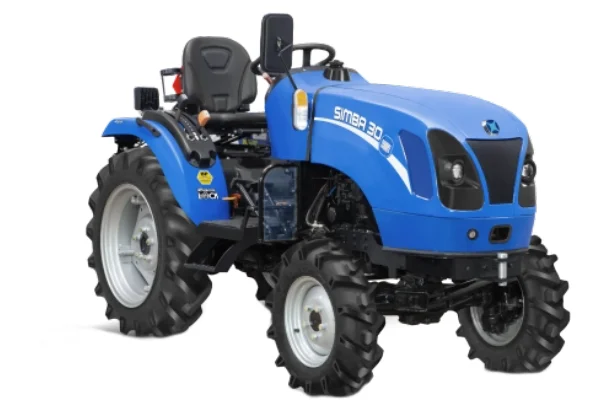
Plows and Harrows: Preparing the Ground
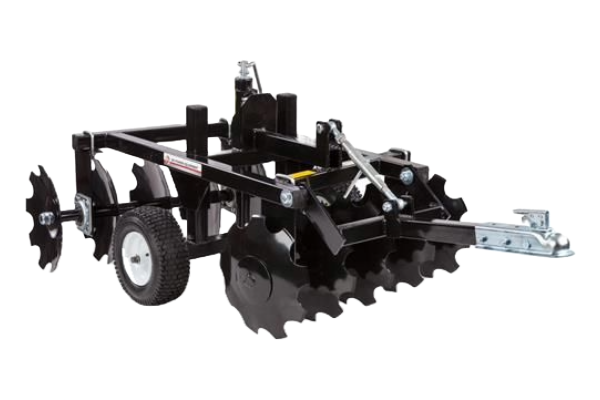
Plows and harrows are essential tools for soil preparation. Plows break up and turn over the soil, while harrows help to level and smooth it. These implements create an ideal seedbed for planting, ensuring that crops get off to a healthy start.
Planting and Seeding Equipment
Planting and seeding equipment is crucial for ensuring precise and efficient sowing, laying the groundwork for successful crop growth.
Seed Drills and Planters: Sowing the Future
Seed drills and planters are precision equipment designed to accurately sow seeds at specific intervals and depths. This ensures efficient planting and even crop distribution, leading to improved yields and reduced wastage.

Harvesting Equipment
Harvesting equipment simplifies the complex task of gathering crops, offering powerful, time-saving solutions.
Combines: The Harvesting Powerhouses
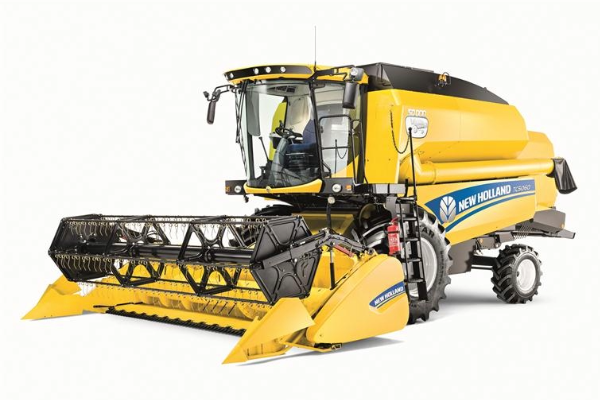
Combines are the giants of the field, capable of performing multiple harvesting functions in one pass. They can cut, thresh, and separate grains from crops like wheat, corn, and soybeans, making the harvesting process highly efficient and productive.
Grain and Forage Harvesters
Grain and forage harvesters are specialized machines for specific crops. Grain harvesters are designed to efficiently gather cereal grains, while forage harvesters are used for crops like silage and hay, which are essential for livestock feed.
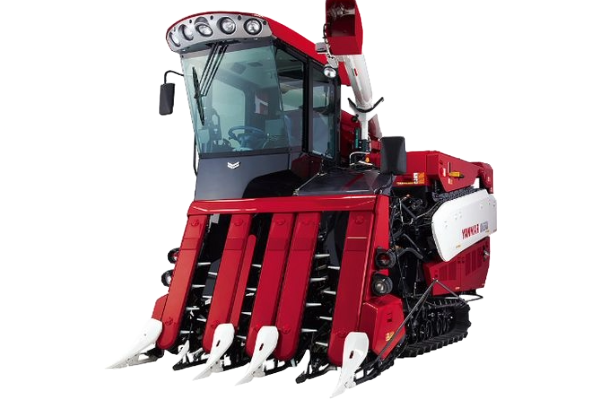
Irrigation and Water Management
Irrigation and water management equipment ensures crops receive the optimal amount of water, vital for healthy growth.
Irrigation Systems: Nurturing Crops
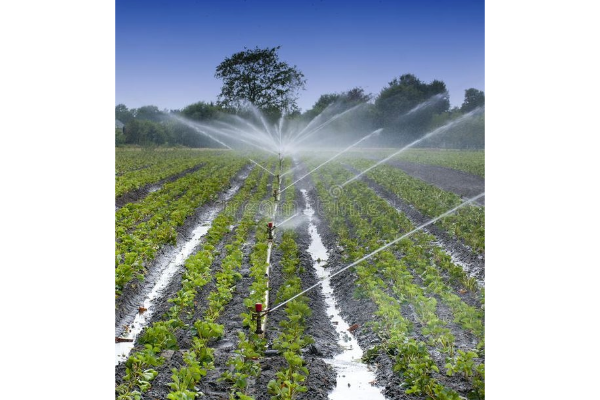
Irrigation systems, from simple sprinklers to sophisticated drip systems, ensure that crops receive the right amount of water at the right time. These systems are crucial for regions with irregular rainfall patterns, allowing farmers to maintain consistent crop production.
Crop Protection and Pest Control
Crop protection and pest control equipment safeguards crops against the challenges posed by pests, diseases, and weeds.
Sprayers and Pesticide Applicators
Sprayers and pesticide applicators are vital for safeguarding crops against pests and diseases. These machines ensure the even and controlled distribution of pesticides and herbicides, protecting crops and reducing losses.
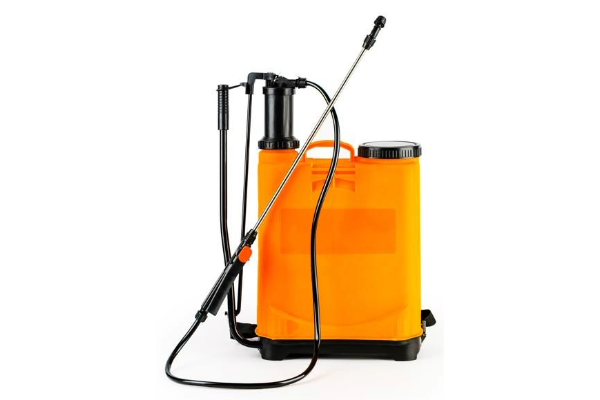
Livestock Equipment
Livestock equipment encompasses a wide array of machinery and tools designed to enhance the well-being and management of livestock operations.
Animal Handling and Feeding Equipment
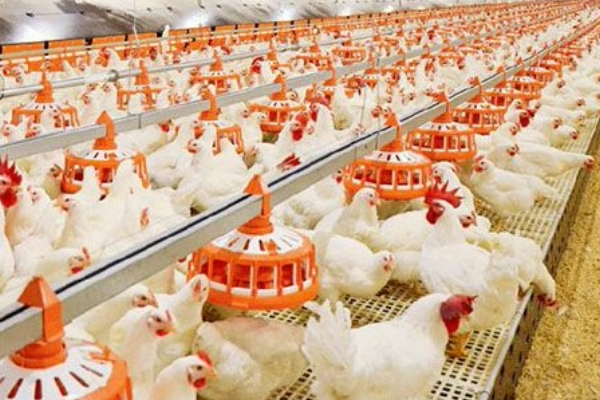
In addition to crop farming, livestock plays a significant role in agriculture. Equipment such as feeding machines, milking machines, and livestock handling tools ensure the well-being and efficient management of livestock operations.
Specialty Agriculture Equipment
Specialty agriculture equipment caters to the specific needs of specialized farming, such as vineyards, orchards, and dairy or poultry farming.
Vineyard and Orchard Equipment
Vineyard and orchard equipment caters to the specific needs of grape growers and fruit orchards. These machines help with tasks like pruning, harvesting, and post-harvest processing.
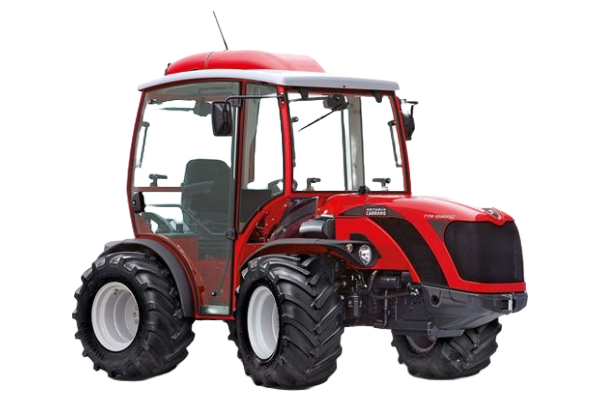
Dairy and Poultry Farming Equipment
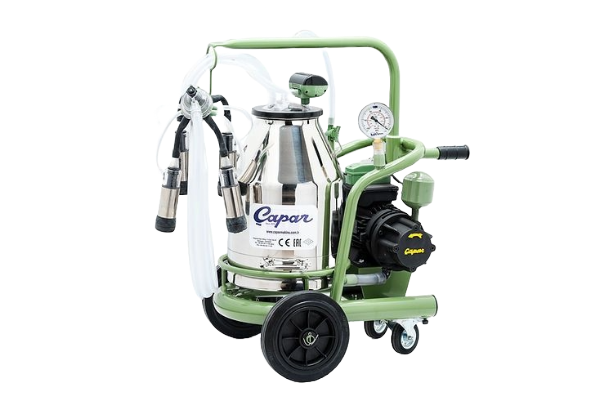
Dairy and poultry farming require specialized equipment for milking, egg collection, and poultry house management. These machines enhance the productivity and welfare of livestock.
Global Impact of Agriculture Equipment
Agriculture equipment has left an indelible mark on the global stage, significantly impacting economies, food production, and the livelihoods of countless individuals worldwide. Its influence extends far beyond farm borders, shaping the world’s agriculture landscape.
Modernizing Agriculture Worldwide
Agriculture equipment has played a pivotal role in modernizing agriculture practices across the globe. From developed nations to emerging economies, its impact is evident in several key areas:
Enhanced Productivity: The adoption of modern machinery has led to substantial increases in agricultural productivity. Tractors, combine harvesters, and advanced irrigation systems have allowed farmers to cultivate larger areas and produce higher yields, addressing the growing demand for food.
Economic Growth: The agriculture equipment industry has spurred economic growth by creating jobs in manufacturing, sales, and service. Furthermore, increased agricultural output has led to more significant contributions to a country’s GDP.
Food Security: Modernized agriculture, powered by equipment, has contributed to global food security by ensuring a consistent food supply. It has helped to feed growing populations and mitigate the impacts of climate change and natural disasters.
Rural Transformation: In many developing countries, the adoption of agriculture equipment has led to rural transformation. It has provided opportunities for economic growth in rural areas, reducing urban migration and enhancing the quality of life for farming communities.
Challenges and Solutions in Global Agriculture
While agriculture equipment has ushered in numerous benefits, it has also brought challenges that require thoughtful solutions on a global scale:
Environmental Impact: The intensive use of agriculture equipment has raised concerns about its environmental impact. Solutions include the development of eco-friendly machinery, precision farming techniques, and sustainable practices to reduce the carbon footprint.
Access and Affordability: In some regions, access to modern agriculture equipment remains a challenge due to financial constraints. Solutions involve providing subsidies, loans, and support to small-scale farmers to improve access to technology.
Resource Management: The increasing global population places immense pressure on land, water, and energy resources. Sustainable farming practices and the responsible use of agriculture equipment are essential to address resource management challenges.
Training and Education: The successful adoption of agriculture equipment requires training and education for farmers. Global initiatives aim to provide technical training and knowledge sharing to enhance the safe and efficient use of equipment.
Climate Resilience: Agriculture equipment must adapt to the changing climate. Research and development efforts focus on creating equipment that can withstand extreme weather conditions and minimize vulnerability.
The global impact of agriculture equipment is a multifaceted story of progress, innovation, and challenges. It is a testament to the industry’s ability to adapt, improve, and contribute to the betterment of agriculture and society on a worldwide scale.
Agriculture Equipment in India: A Transformative Force
India’s agriculture is the lifeblood of the nation, employing a significant portion of its population and playing a crucial role in its economy. With its vast and varied agricultural practices, India has become a melting pot for innovation in agriculture equipment. From smallholder farms in rural villages to expansive agricultural landscapes, India’s unique challenges and diverse needs have driven the development of a wide range of agricultural machinery and solutions.
Revolutionizing Indian Agriculture
Indian agriculture has witnessed a significant transformation in recent years. With a growing population and changing consumer preferences, the need for more efficient and sustainable farming practices became apparent. Agriculture equipment played a pivotal role in this revolution. The advent of advanced machinery, from precision seeders to state-of-the-art harvesters, has improved crop yields and reduced the dependency on manual labor. These innovations have not only boosted agricultural productivity but have also enhanced the livelihoods of Indian farmers. This revolution, powered by cutting-edge equipment, is driving Indian agriculture into a more prosperous and sustainable future.
Indigenous Manufacturing Excellence
India’s journey in agriculture equipment manufacturing has been marked by excellence. The country has not only emerged as a significant consumer of farming machinery but has also become a notable producer. Indigenous manufacturing has excelled in producing equipment that aligns with the unique requirements and conditions of Indian agriculture. This excellence is evident in the development of tractors and machinery that are tailored to the diverse landscapes, crop types, and farming practices across the country. The “Make in India” initiative has further fueled this growth, making India a manufacturing hub for both domestic consumption and export.
Tailoring Equipment to India's Diverse Needs
One of the hallmarks of agriculture equipment in India is its adaptability to diverse needs. The country’s vast and varied landscape demands a range of equipment that can cater to different crops and terrains. This diversity includes compact tractors for small farms, specialized equipment for horticulture, and heavy-duty machinery for large-scale commercial agriculture. The ability to tailor equipment to India’s diverse needs is a testament to the industry’s responsiveness to local conditions and the commitment to improving the livelihoods of Indian farmers.
Supporting the Global Market
Indian agriculture equipment manufacturers have not limited their impact to the domestic market. They have expanded their reach to the global stage. Equipment produced in India is now exported to various countries, making it a vital player in the international agriculture equipment market. The quality and cost-effectiveness of Indian machinery have made it an attractive choice for countries with similar agricultural conditions. India’s participation in the global market not only contributes to economic growth but also showcases the country’s capabilities on the world stage.
Addressing Challenges and Promoting Sustainability
Indian agriculture faces numerous challenges, from fluctuating weather conditions to resource constraints. Agriculture equipment has played a significant role in addressing these challenges. Innovations such as drip irrigation systems, conservation tillage machinery, and precision agriculture technologies have contributed to sustainable farming practices. These technologies not only optimize resource usage but also promote eco-friendly and environmentally responsible agriculture. By addressing challenges and promoting sustainability, the agriculture equipment sector in India is helping secure the future of farming.
Government Initiatives and the Role of Subsidies
Government initiatives and subsidies have been instrumental in supporting the agriculture equipment sector in India. Schemes such as “Pradhan Mantri Krishi Sinchai Yojana” and “Mega Food Parks” have incentivized the adoption of modern equipment and technology. Subsidies on farm machinery and equipment have made them more accessible to small and marginal farmers. These initiatives have not only boosted mechanization but have also improved farm productivity and reduced post-harvest losses. They underscore the crucial role of government support in enhancing agriculture equipment adoption and, subsequently, the prosperity of Indian farmers.
Technological Advancements Transforming Agriculture :
The integration of cutting-edge technology has reshaped agriculture equipment, leading to greater precision, autonomy, and productivity. This heading provides an overview of the technological advancements driving this transformation.
Precision Agriculture (A Data-Driven Revolution) : Precision agriculture represents a data-driven revolution that has fundamentally transformed the way farming is practiced. In precision agriculture, farmers utilize technology and data to optimize every aspect of their operations. This revolution is powered by a combination of satellite imagery, GPS technology, and on-the-ground sensors that provide a wealth of data about crop health, soil conditions, and weather patterns. The collection and analysis of this data enable farmers to make informed decisions about when, where, and how to plant, irrigate, and fertilize. Precision agriculture not only increases crop yields and reduces resource usage but also contributes to sustainable farming practices by minimizing waste and environmental impact. It exemplifies the future of agriculture, where the fusion of data and technology drives efficiency and productivity to unprecedented heights.
Autonomous Farming (The Future of Agriculture) : Autonomous farming, often termed as “smart farming,” is poised to shape the future of agriculture. It involves the use of autonomous machinery, such as self-driving tractors and robotic harvesters, to perform various farming tasks with minimal human intervention. These machines are equipped with advanced sensors and AI-driven technology that allows them to navigate fields, plant seeds, and harvest crops with precision. The benefits of autonomous farming are manifold. It reduces the labor-intensive nature of farming, addressing labor shortages and increasing efficiency. It also contributes to resource conservation by optimizing the use of water, fertilizers, and pesticides. Moreover, autonomous farming enhances safety by reducing human exposure to potentially hazardous conditions. The future of agriculture is automated, and the rise of autonomous farming is not just a trend; it’s a transformative force that will reshape the industry.
Robotics in Agriculture (The Rise of Agribots) : The integration of robotics into agriculture heralds the rise of agribots, robotic systems designed to perform a wide range of agricultural tasks. Agribots come in various forms, from small, nimble robots that weed and inspect crops to larger, sophisticated machines that plant and harvest with precision. The adoption of agribots is driven by the need to address labor shortages, improve efficiency, and reduce the environmental impact of farming. These robots are equipped with AI and machine learning algorithms that enable them to identify and respond to specific crop conditions. They can work tirelessly, day and night, increasing productivity and reducing the time required for labor-intensive tasks. Agribots contribute to sustainability by minimizing the use of resources and reducing chemical inputs. Their role in the agriculture industry is set to grow, marking the beginning of a new era where robots collaborate with farmers to feed the world’s growing population and tackle the challenges of the 21st century.
Sustainable Farming: Equipment and Practices
The concept of sustainable agriculture and how equipment is instrumental in promoting eco-friendly farming practices.
Eco-Friendly Tractors and Machinery : Eco-friendliness has become a top priority in agriculture, driving the development of tractors and machinery that are not only efficient but also environmentally responsible. Modern tractors are equipped with cleaner, more fuel-efficient engines that produce fewer emissions. Furthermore, advancements in alternative fuels, such as biodiesel and electric power, are paving the way for tractors that leave a smaller carbon footprint. Eco-friendly machinery also incorporates features like reduced noise pollution and minimized soil disturbance, which are essential for preserving the fragile ecosystems in which farming takes place. The focus on eco-friendly tractors and machinery reflects a commitment to sustainable and responsible agriculture that safeguards both the environment and future generations.
Soil Health and Conservation Practices : Soil health and conservation have gained immense importance in agriculture equipment practices. Modern machinery is designed with a keen focus on minimizing soil compaction, which can negatively impact crop growth. Innovative equipment features, such as adjustable tire pressures and track systems, help distribute weight more evenly, reducing compaction and preserving the integrity of the soil. Additionally, precision agriculture techniques enable farmers to optimize planting and harvesting, ensuring that soil is managed in a sustainable manner. These practices are pivotal in conserving arable land and maintaining soil fertility for the long-term health of agriculture.
Precision Agriculture for Resource Efficiency : Precision agriculture is a game-changer for resource efficiency in farming. It utilizes technology, such as GPS and sensor systems, to optimize every aspect of farming operations. Precision agriculture ensures that resources like water, fertilizers, and pesticides are used judiciously, minimizing waste and environmental impact. Equipment, including tractors and harvesters, is equipped with precision-guided systems that enable accurate seeding, fertilizing, and irrigation, reducing resource consumption and increasing crop yields. This resource-efficient approach is not only economically advantageous but also environmentally responsible, aligning with the global drive for sustainable agriculture practices.
Agriculture Equipment Maintenance and Safety
Proper maintenance and safety precautions are vital for ensuring the longevity of farm machinery. The emergence of online markets that are transforming equipment maintenance and safety.
Ensuring the Longevity of Farm Machinery
Maintaining the long-term efficiency and functionality of farm machinery is a critical factor in the sustainability of agriculture.
Regular Maintenance (A Key to Equipment Longevity) is the bedrock of ensuring the longevity and optimal performance of farm machinery. Agricultural equipment, subjected to rigorous usage in challenging environments, requires consistent attention to keep it in top working condition.
Farmers and equipment owners are well aware that preventive maintenance pays dividends in the long run. Routine checks, timely servicing, and a proactive approach can significantly extend the lifespan of equipment. Regular maintenance involves inspecting critical components, such as engines, transmissions, hydraulic systems, and electrical systems, to detect and address issues early. Lubrication, filter replacements, and fluid level checks are standard procedures that ensure the smooth operation of equipment. By addressing wear and tear before it escalates, maintenance not only prolongs the life of machinery but also reduces the risk of sudden breakdowns, which can lead to costly downtime.
Furthermore, regular maintenance helps maintain the safety of equipment. Safety features, like guards and sensors, need to be inspected and maintained to ensure they function as intended. This includes checking for loose or damaged parts, verifying emergency shutdown systems, and evaluating the effectiveness of safety interlocks. Neglecting these safety checks can have severe consequences for operators and those working in the vicinity. Therefore, regular maintenance is not just about preserving the equipment but also safeguarding the well-being of those involved in the farming operations.
Safety Precautions and Guidelines is paramount in agriculture, where the operation of heavy machinery and exposure to potentially hazardous environments pose significant risks. Implementing comprehensive safety precautions and guidelines is essential for protecting both equipment and human resources.
Safety guidelines in agriculture encompass a wide range of practices, from personal protective equipment (PPE) requirements for operators to clear signage and demarcation of danger zones. Training and education are fundamental aspects of safety in agriculture. Operators and workers should be well-versed in equipment operation, emergency procedures, and best practices for ensuring safety during daily tasks.
In addition to individual safety, proper equipment maintenance directly contributes to overall safety. Well-maintained machinery is less likely to malfunction or break down, reducing the risk of accidents caused by equipment failures. Regular safety inspections are vital, ensuring that all safety features are operational and that the machinery is free from potential hazards. Collaborative safety efforts, involving equipment operators, farm managers, and safety officers, are integral in fostering a culture of safety on the farm.
Safety precautions also extend to environmental considerations. Proper disposal of waste materials, environmentally friendly fuel and lubricant choices, and soil and water conservation practices all contribute to the overall safety of the farm and the surrounding ecosystem. By adhering to safety precautions and guidelines, the agriculture industry not only safeguards the well-being of its workforce but also promotes sustainable and responsible farming practices.
The Digital Revolution in Equipment Maintenance
The emergence of online markets and digital platforms has brought about a paradigm shift in agriculture equipment maintenance and safety.
Online Platforms Simplifying Maintenance and Safety
The advent of online platforms has introduced a revolutionary approach to agriculture equipment maintenance and safety. These platforms have redefined the way farmers and businesses manage their machinery, offering convenience, efficiency, and a wealth of resources that simplify the entire process.
Online platforms like SafeSparesOnline.com have emerged as comprehensive solutions for those seeking to streamline equipment maintenance. One of the key advantages is the accessibility to genuine spare parts. These platforms provide a vast inventory of authentic components, eliminating the uncertainty and potential risks associated with counterfeit or substandard parts. This ensures that when a replacement is needed, it is the right part, specifically designed for the machinery in question.
Additionally, these platforms act as knowledge hubs. They offer a wealth of information, from maintenance guides and user manuals to expert advice and tips. Farmers and equipment owners can access a trove of resources that empower them to take charge of their equipment’s well-being. Whether it’s understanding the intricacies of a particular machine or troubleshooting issues, these platforms provide a valuable reference point.
Safety is also a core component of these platforms. They offer guidelines and best practices for ensuring the safe operation of equipment. From comprehensive safety checklists to instructional videos, they equip users with the knowledge and tools needed to maintain a secure working environment. By making safety information readily available, these platforms promote a culture of responsibility and awareness among users.
Perhaps one of the most significant advantages of online platforms is their accessibility. They are available 24/7, which means that farmers and equipment owners can access the information and resources they need at their convenience. This accessibility ensures that maintenance and safety are not restricted by time or location, enabling users to address issues and gather information when it suits them best.
Data-Driven Insights for Safety
In an age of digital transformation, data-driven insights have become invaluable for ensuring the safety of agriculture equipment and those who operate it. Agriculture machinery is increasingly equipped with sensors and telemetry systems that collect and transmit data in real-time. This data provides a window into the condition and performance of equipment, allowing for proactive safety measures.
For instance, sensors can monitor critical parameters like engine temperature, hydraulic pressure, and component wear. When these sensors detect anomalies, they trigger alerts or automated responses. This not only helps in preventing breakdowns but also in averting potentially hazardous situations. Operators are immediately informed of issues, allowing them to take corrective actions swiftly.
Data-driven insights also extend to predictive maintenance. Algorithms analyze equipment data to predict when components are likely to fail. By identifying these potential issues in advance, maintenance can be scheduled, reducing the risk of unexpected breakdowns that can lead to accidents.
IoT technology plays a pivotal role in safety. It enables real-time monitoring of conditions in and around machinery. For example, IoT sensors can detect the presence of workers in hazardous areas or monitor environmental conditions like air quality. If unsafe conditions are detected, automatic alerts can be issued, and immediate actions can be taken to ensure the safety of personnel.
Data-driven insights not only enhance the safety of agriculture equipment but also contribute to the efficiency of operations. They enable informed decision-making, reduce downtime, and ultimately create a safer working environment for all involved. As agriculture becomes more interconnected and data-rich, these insights will continue to play a central role in ensuring safety.
In an era of digital transformation, online platforms are empowering farmers and businesses with the tools and resources they need to streamline maintenance, prioritize safety, and ensure the longevity of farm machinery. SafeSparesOnline.com is at the forefront of this revolution, providing a seamless and reliable way for individuals and enterprises to access genuine spare parts, expert knowledge, and safety guidelines, ultimately contributing to the continued success of agriculture equipment maintenance and safety.
Trends and Future Prospects of Agriculture Equipment
An overview of the evolving trends and future prospects in agriculture equipment.
Smart Farming: The Next Frontier
Smart farming is poised to be the next frontier in agriculture, representing a holistic approach to modern farming practices. At its core, smart farming leverages cutting-edge technologies, such as the Internet of Things (IoT), artificial intelligence (AI), and data analytics, to optimize every aspect of agricultural operations. Sensors placed throughout the field collect real-time data on crop health, soil moisture, and weather conditions. This data is then processed and analyzed by AI algorithms to make data-driven decisions. For instance, smart farming systems can precisely determine when and where irrigation is needed, the right time to apply fertilizers, and even predict crop diseases. The integration of drones and autonomous machinery further enhances the efficiency of tasks like planting and harvesting. Smart farming not only boosts productivity and resource efficiency but also minimizes waste, promoting sustainability in agriculture. It is the next step in the ongoing journey to transform traditional farming into a technology-driven, data-savvy, and environmentally conscious practice.
Green Technology and Sustainability
Green technology is becoming the linchpin of sustainability in agriculture. As the world grapples with environmental challenges, the agriculture industry is increasingly embracing eco-friendly practices and technologies. Green technology encompasses a wide array of innovations, including the development of machinery with cleaner, more fuel-efficient engines, the use of alternative fuels such as biodiesel, and the incorporation of precision agriculture techniques to minimize resource usage. These advancements not only contribute to reducing the carbon footprint of agriculture but also protect ecosystems and conserve natural resources. Green technology is not limited to machinery; it extends to practices like organic farming, no-till agriculture, and integrated pest management, all of which promote sustainable farming while ensuring food security. In essence, green technology and sustainability are inextricably linked, providing a path forward for agriculture that balances productivity with ecological responsibility.

